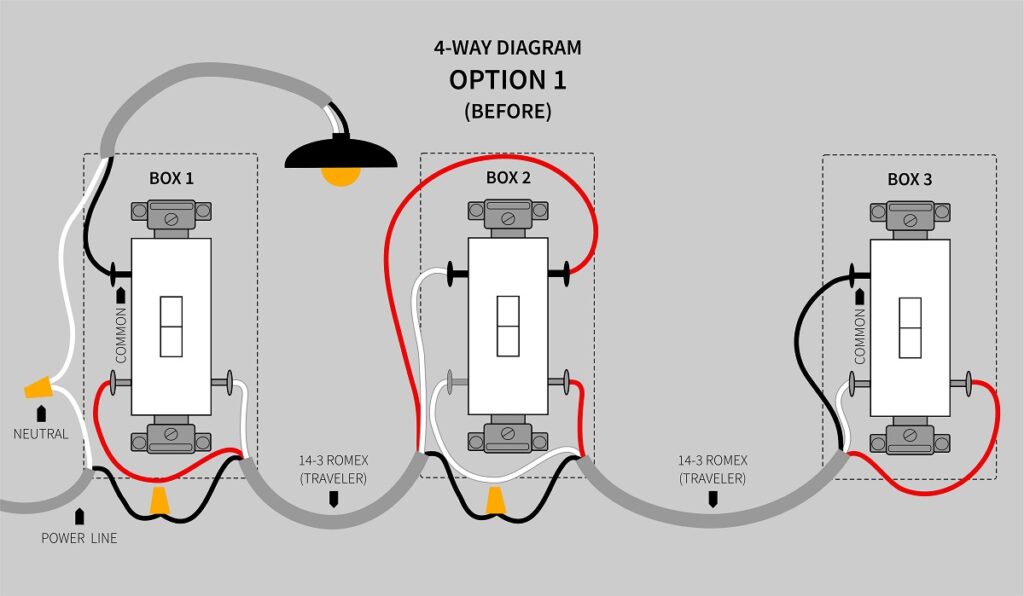Have you ever looked at a light switch or an electrical outlet and wondered how it all works? Have you heard the terms "line" and "load" but have no idea what they mean? In this article, we will explore what is line and load in electrical and how it affects your home.
Dealing with electrical wiring can be frustrating and confusing, especially if you're not an electrician. It's essential to understand the terminology and the wiring process to ensure everything is installed correctly and safely. Knowing what is line and load in electrical is essential because mixing these up can result in improperly wired circuits, which can cause serious harm or damage.
The line refers to the electrical supply that provides power to a fixture or outlet. It is typically the black wire in a circuit and is connected to the switch or outlet or the electrical panel. On the other hand, load refers to the wires that send power to the devices that use electricity or light the bulbs. It can be any wire that carries current, including the white wire or neutral, or the red or blue wire for a multicolored cable.
In summary, line and load are essential components in electrical wiring because they ensure that the right amount of electricity goes to the appropriate devices. Knowing how they work can help you avoid electrical problems and ensure that you have a safe and functional electrical system in your home.
What is line and load in electrical and how it works?
When I was replacing a light fixture in my bedroom, I remember getting confused between the line and the load wires. If it wasn't for the manual, I wouldn't have been able to figure out which wire went where. Essentially, the line is the power supply wire, which carries the current from the electrical panel, through the switch, and to the light fixtures or outlets. After the line wire comes the load wire, which carries the current to the devices that use electricity or light the bulbs.
The line and load wires are usually color-coded, with black being the line wire and red or blue being the load wire. The neutral or white wire and the ground wire are usually not color-coded, but it's essential to ensure that they are connected correctly to avoid any electrical hazards. It's crucial to ensure that the line and load wires are connected appropriately to the devices, considering they carry different electrical loads, which can cause a fire or injury if mixed up.
What are the safety measures when dealing with line and load in electrical?
It's essential to ensure that the main switch is turned off when working with electrical wiring and line and load wires. You should also ensure that all the wires are free of electrical charges and are not connected to the power source before touching them. Additionally, you should always use protective gear, such as gloves and safety glasses, when working with line and load wires to avoid electrical shocks.
What are the common mistakes when dealing with line and load in electrical?
Switching the load and line wires is one of the most common errors that people make when dealing with electrical wiring. Many people mix up the two wires, especially when replacing a light fixture or an outlet. Ignoring the ground wire or neutral wire is another mistake that can be dangerous, as it can cause a short circuit or electrical shock.
How can you prevent mistakes when dealing with line and load in electrical?
The best way to prevent mistakes when dealing with line and load in electrical is by following the wiring diagram carefully. Ensure that the wires are connected to the right terminals and have the appropriate amount of electrical load. You can also use a voltage detector or a multimeter to test the wires and ensure that they are free of electric charge before touching them.
Conclusion
Understanding what is line and load in electrical and how they work together is essential for a functional and safe electrical system in your home. Mixing up these wires can lead to serious hazards, including fire and electrical shock. Therefore, follow the wiring diagram and safety measures carefully when installing or replacing any electrical fixtures or outlets. As always, when it comes to electrical work, it's better to be safe than sorry.
Gallery
Do-It-Yourself: How To Move A Light Switch?

Photo Credit by: bing.com / switches wiring electrical hf
Electrical Circuit Basics Part 1 - Line & Load - YouTube

Photo Credit by: bing.com / load line electrical circuit
17 Best Images About Electrical On Pinterest | Light Switches, Pictures

Photo Credit by: bing.com / gfi combo
Electrical | Outlet Wiring, Home Electrical Wiring, Basic Electrical Wiring

Photo Credit by: bing.com / gfci outlet line wiring wire series outlets electrical circuit breaker parallel outdoor load diagram receptacle power light does lights bathroom
GFCI And Downstream Protection | Home Electrical Wiring, Outlet Wiring

Photo Credit by: bing.com / gfci downstream